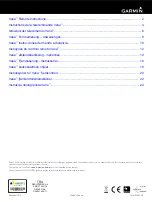
4.2. System sizing
4.2.1. Current rating Lynx Smart BMS
The main safety contactor of the Lynx Smart BMS has a continuous current rating of 500A and a peak current rating of 600A
for a duration of 5 minutes. Even if the Lynx Smart BMS has an overcurrent protection, make sure that the current rating is not
exceeded.
The following happens in the event that the peak current limit or the 5 minute interval has been exceeded:
• an overcurrent alarm will be generated
• ATC or ATD (depending on current direction) is disabled after a 30s delay
It is not possible to parallel multiple Lynx Smart BMS modules. Only a single Lynx Smart BMS can be used per system.
The table below gives an idea of how much power a Lynx Smart BMS is rated for at different voltages. This will give you an
indication how big the connected inverter/charger system can be. Keep in mind that if inverters or inverter/chargers are used, both
the AC and the DC system will be powered from the batteries.
Voltage vs. Current
12V
24V
48V
500A
6kW
12kW
24kW
4.2.2. Fusing
The Lynx Smart BMS is not a system fuse. It only warns when the current is too high. Fusing needs to be done externally, for
example by connecting Lynx Distributor modules to the Lynx Smart BMS or by using
external fuse holders and fuses
.
Always use fuses with the correct voltage and current rating. Match the fuse rating to the maximum voltages and currents that
potentially can occur in the fused circuit. For more information on fuse ratings and fuse current calculations see the
.
The total value of the fuses of all circuits should not be more than the current rating of the Lynx module, or the
Lynx model with the lowest current rating in case of multiple Lynx modules are used.
4.2.3. Cabling
The current rating of the wires or cables used to connect the Lynx Smart BMS to batteries and/or the DC loads, has to be rated
for the maximum currents that can occur in the connected circuits. Use cabling with a sufficient core surface area to match the
maximum current rating of the circuit.
For more information on cabling and cable thickness calculations see our book,
Lynx Smart BMS
Page 5
System Design considerations and
examples









































